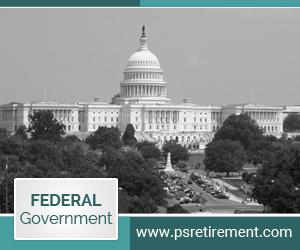How Much Will I Receive from My FERS Pension?

Federal Employees receive comprehensive benefits with healthcare along with retirement benefits, which is a pension through the Federal Employee Retirement System (FERS). Funded mainly by government agency contributions, the FERS pension distributes retirement income to those that qualify for pension.
How does it work?
While most federal workers save less than 1% of their annual salary to the pension system, the agency contributes at least 10.7% to FERS. The employee’s contribution is subjected to taxes, such as income and state taxes, as the savings are withheld from after-tax income.
Mandatory employee contribution rates were raised noticeably after the Middle-Class Tax Relief, and Job Creation Act of 2012 was put into place. Federal workers that were hired after 2012 had to put in a mandatory 3.1% of their annual pay. This was increased even further after the Bipartisan Budget Act of 2013, which had federal employees contribute at the rate of 4.4% once hired after 2013. With the increase in employees’ contribution rates, the agency contributions have also increased as well.
With these contributions, the federal government agrees to provide a monthly income during your retirement. Unlike other plans such as a 401(k) or Thrift Savings Plan, you do not need to be concerned with how the money is invested. All that needs to be done is to ensure that the mandatory contributions are made and that are employed for the amount of time needed to be eligible for FERS.
So how much would you receive from FERS?
Below is the formula you can use to calculate your pension amount:
For those under the age of 62 at separation or Age 62 or older with less than 20 years of service the formula is:
FERS Pension = 1% x high-3 salary x years worked
For age 62 or older at separation with 20 or more years of service the formula is:
FERS Pension = 1.1% x high-3 salary x years worked.
This equals 1% – 1.1% of your highest annual wage for every year worked. You can max out the benefit with over 30% of your pre-retirement income covered.






